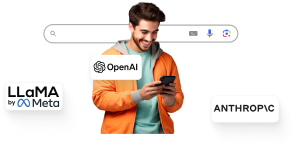Blockchain Technology in Education: Enhancing Data Security, Records, and Compliance

Education is a data-rich sector where businesses focus on making data accessible, secure, and trustworthy for users. This raises the question: what can blockchain technology achieve in education?Mark Lumley, a technology consultant at Freeths, provides insights. New technologies often generate excitement, with buzzwords like AI currently dominating conversations, while blockchain had a similar prominence a few years ago. Blockchain has already made inroads into education, a field that must stay current and relevant by addressing immediate data needs, incorporating technology into curricula to prepare students for the future workplace and society, maximizing technology to facilitate education delivery, and managing the operational aspects of educational organizations. However, education faces challenges in adopting new technologies due to sensitive personal and performance data, and the complexity of public and private sector involvement. Cyber-attacks and malicious actors threatening data integrity are ongoing concerns. Blockchain has potential in many areas, notably managing pupil data and school records that transfer across schools and authorities, providing lifelong, reliable attainment records accessible to students for various purposes, and enabling secure data sharing critical for safeguarding and compliance. Blockchain's development predates the 2008 Bitcoin white paper, evolving from cryptography and mathematical theory. It can be viewed as an advanced form of double-entry bookkeeping with cryptographically secured blocks forming an immutable, distributed ledger that users can trust without reliance on intermediaries. This security foundation is significant, though future computing advances like quantum computing pose challenges. Open-source movements, led by Linux, have driven blockchain development. Hyperledger, for example, supports private blockchains with permissioned access, facilitating secure, education-focused implementations. Professional qualifications and standard-setting projects exist to support blockchain coding, deployment, and management. Blockchain enables more secure databases and potentially cheaper transaction management, serving as foundational technology for many education services. Present blockchain applications in education focus on record longevity and accuracy. Examples include underpinning records management in common education systems; verifying awards and certifications (credentialing), like MIT’s digital qualifications via Blockcerts; and managing identity through self-sovereign identity (SSI), which gives users control over sharing verifiable credentials, enhancing privacy.
Integrations such as DocuSign’s use of Ethereum to record agreement signatures demonstrate blockchain’s expanding role. Smart contracts, which automate transactions via machine-readable code, have faced security challenges but continue evolving, especially on private chains. Deploying blockchain raises legal, technical, and sector-specific considerations. Regulations specific to blockchain lag behind its evolution, so existing legal frameworks for data privacy, cybersecurity, procurement, and contracting remain crucial. Understanding technology reliability, data access, backup, and recovery plans is essential. The Law Society’s “Blockchain: Legal and Regulatory Guidance” offers detailed insights. Government standards and guidance on technology adoption in education are available, and expert support can assist education bodies in blockchain deployment and assurance. In conclusion, blockchain—originating from mathematical innovation—has become embedded in education technology, influencing platforms and processes. While alternatives like cloud computing, APIs, containerization, machine learning, and AI are equally impactful, the foundational principles for legal, data, and security assessments before deployment are consistent. Legislation on emerging technologies tends to emphasize national security rather than specific sectors like education. It is important not to be distracted by novelty while continuing to explore and implement new technologies responsibly. Good practices in technology assessment, procurement, contracting, and deployment remain vital. Key considerations include requiring warranties for legal compliance, liability and insurance coverage for failures (especially related to data breaches), obligations to maintain security standards, audit rights, service level management, and plans for disaster recovery and exit strategies. Technology should not relieve responsibility for clear data mapping, access control, and security. Poorly drafted terms and privacy notices often indicate inadequate understanding or commitment, potentially signaling deeper service delivery issues. Finally, securing strong support from managed service providers and technology partners, maintaining disciplined technology assurance, and leveraging expert legal advice are essential for successfully navigating blockchain’s evolving role in education.
Brief news summary
Education increasingly relies on data, making accessibility, security, and trust crucial. Blockchain technology provides a secure, immutable ledger that manages educational data efficiently without intermediaries. It improves student data management, supports lifelong achievement records, enables safer data sharing, and simplifies credential verification, as seen in projects like MIT’s Blockcerts. Self-sovereign identity (SSI) systems empower individuals to control their personal information, while integrations like DocuSign with Ethereum expand blockchain’s educational uses. Challenges include regulatory uncertainty, privacy concerns, cybersecurity risks, and implementation complexities. Successful deployment requires strong legal frameworks, risk management, vendor agreements, data recovery plans, and compliance with security standards. While not a universal solution, blockchain complements cloud computing and AI in advancing educational technology. Its effective adoption needs thorough evaluation, disciplined assurance, and expert legal guidance to ensure data integrity and enhance educational outcomes.
AI-powered Lead Generation in Social Media
and Search Engines
Let AI take control and automatically generate leads for you!

I'm your Content Manager, ready to handle your first test assignment
Learn how AI can help your business.
Let’s talk!

Leadership Challenges in the Age of AI
As artificial intelligence rapidly advances at an unprecedented rate, organizations and society face new challenges and opportunities in leadership.

VanEck Launches NODE ETF To Tap Blockchain's Next…
If the internet transformed communication, blockchain is redefining trust.

How Peter Thiel’s Relationship With Eliezer Yudko…
Peter Thiel has profoundly influenced Sam Altman’s career.

Ripple Launches Cross-border Blockchain Payments …
Ripple has introduced blockchain-enabled cross-border payments in the United Arab Emirates (UAE), potentially accelerating cryptocurrency adoption in a nation that embraces digital assets.

My Spanish teacher taught me what AI can’t do
As AI increasingly shapes education, it’s important to emphasize a timeless, effective teaching tool: high-quality, in-person relationships with students.

Microsoft goes all in on AI agents at annual Buil…
Microsoft (MSFT) envisions a future where AI agents handle everything from coding to navigating its Windows operating system.

Chainlink, Kinexys, and Ondo test blockchain DvP …
A test carried out by Chainlink, Kinexys by J.P. Morgan, and Ondo Finance demonstrated the potential for blockchain infrastructure to streamline delivery versus payment (DvP) transactions.

 Auto-Filling SEO Website as a Gift
Auto-Filling SEO Website as a Gift








 Auto-Filling SEO Website as a Gift
Auto-Filling SEO Website as a Gift

